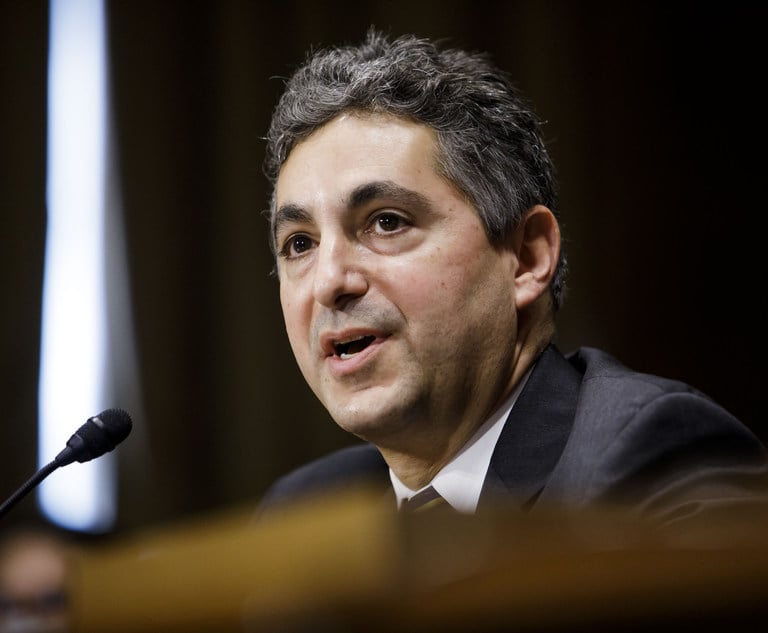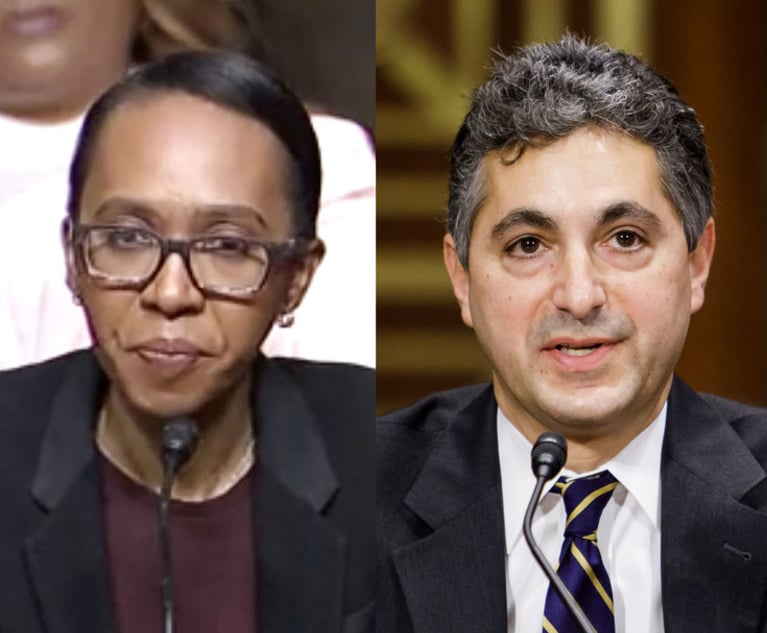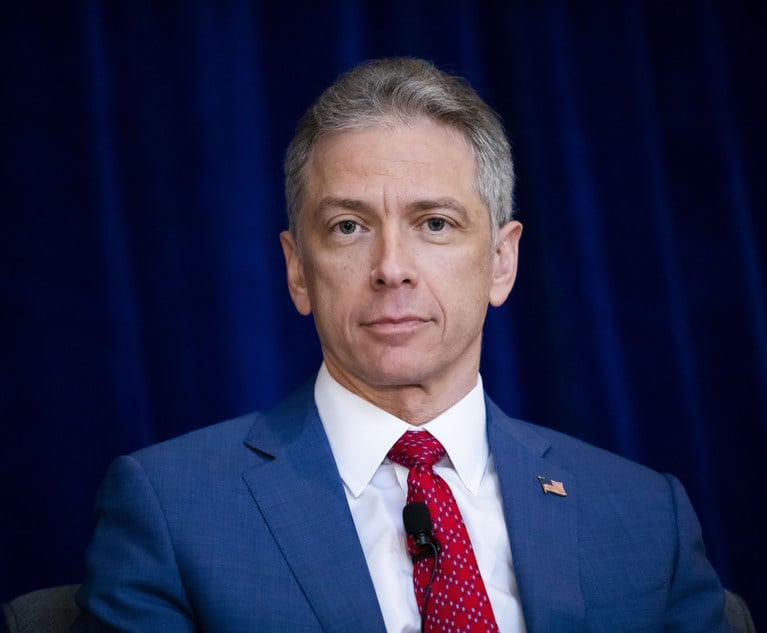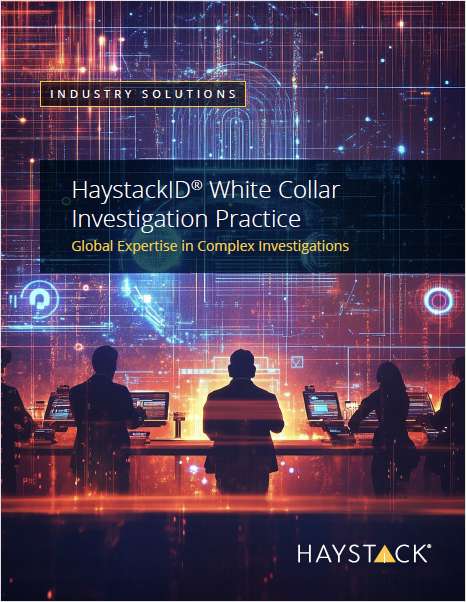Skilled in the Art: Going En Banc on Patent Footnotes + Turns Out $51 Million in Attorney Fees Is a Bit Much
The decision delved into whether voluntarily withdrawing a patent infringement case reset the clock for filing inter partes review.
August 17, 2018 at 02:00 PM
9 minute read
|
I Convened En Banc and All I Got Was This Footnote
I think it would be fair to say that the Federal Circuit doesn't care much for en banc review. In addition to the extra work, divided en banc opinions are the closest the Federal Circuit gets to circuit splits. Those splits are an invitation to the U.S. Supreme Court to step in and sow more patent chaos clarify the law.
On Thursday, the Federal Circuit issued its third en banc opinion of the year in a patent case—but limited it to a single footnote. “Footnote 3 of the opinion is joined by PROST, Chief Judge, NEWMAN, MOORE, O'MALLEY, REYNA, WALLACH, TARANTO, CHEN, HUGHES, and STOLL, Circuit Judges,” the court announced in Click-to-Call-Technologies v. Ingenio. “Opinion concurring in footnote 3 of the opinion filed by Circuit Judge TARANTO. Opinion dissenting from footnote 3 of the opinion filed by Circuit Judge DYK, in which Circuit Judge LOURIE joins.”
That's a lot of back-and-forth over a single footnote, right? The court issued 65 pages of opinions in Click-to-Call, but an 87-word footnote that distilled the essence of the holding was the only area of common ground for the full court.
The judges were wrestling with this issue: Anyone who is sued for patent infringement in district court has one year to file a petition for inter partes review. The Patent Trial and Appeal Board has not been enforcing that deadline when district court cases are voluntarily dismissed without prejudice. The PTAB points to Federal Circuit case law that treats such dismissals as “leaving the parties as though the action had never been brought.”
Judge Kathleen O'Malley wrote for a unanimous three-judge panel that this is simply a background principle of law that applies only in limited contexts. It's clearly trumped by the language of the America Invents Act, which starts the one-year clock running when a party is served with a complaint, O'Malley wrote. So there is no reason to defer to the PTAB's interpretation of the AIA.
Judge Timothy Dyk dissented, cautioning that patent owners might now use dismissals to lull accused infringers into complacency until the clock runs out on their IPR rights. “When an action is filed, and then later voluntarily dismissed, the accused infringer is led to think that the controversy has dissipated,” he wrote.
Judge Richard Taranto said it's far-fetched that a wily patent owner could outfox multiple would-be infringers this way. In an opinion concurring with O'Malley's, he argued that dismissing an action without prejudice expressly puts all parties on notice that a lawsuit might be refiled. “The assumptions of legal ignorance, naiveté, or uniform fingers-crossed risk assessment seem strained,” he wrote.
The en banc court apparently didn't want to deal with hypotheticals, Chevron deference, legislative history and so on. Instead it agreed only that the one-year time bar applies, voluntary dismissal or not.
Peter Ayers of the Law Office of Peter J. Ayers, who's been persevering over this appeal for 3.5 years, chalks up the win. DLA Piper represented Oracle Corp., which settled out of the case last month, while Ingenio Inc. and YellowPages.com were repped by Kilpatrick Townsend & Stockton.
|
$51 Million Fee Award Will Get Haircut
In other Federal Circuit news, the court ruled ruled that non-practicing entity Rembrandt Technologies LP will have to pay “exceptional case” attorney fees to a gaggle of cable TV companies. But it won't be the entire $51 million ordered by U.S. District Judge Gregory Sleet.
Yes, that says $51 million. Not $5.1 million.
Sleet made the mammoth award last year, finding that Rembrandt had asserted unenforceable patents, failed to prevent the spoliation of evidence, and wrongfully gave fact witnesses a contingency interest in the outcome.
There were a few hiccups in the fee litigation. The cable companies officially asked for fees in 2011, but Sleet didn't rule on the motion for several years. They began clamoring again after the U.S. Supreme Court loosened the standard for fees in patent cases in 2014. Rembrandt argued that they'd abandoned their motion. In a series of what the Federal Circuit called “remarkably terse” orders, Sleet deemed the case exceptional under Section 285 and awarded “almost all fees” requested, including some that one company incurred defending against Rembrandt in bankruptcy court.
Judge Kathleen O'Malley was highly deferential to Sleet on the finding of exceptionality. “The district court here certainly understood the litigation better than we can on appeal,” she wrote at one point in In re Rembrandt Technologies. And the delay wasn't prejudicial. “Rembrandt was never entitled to assume that the motions would be denied or simply ignored,” she wrote.
But, she concluded, Sleet did not sufficiently tie the $51 million to specific findings of misconduct. In an ordinary case involving a few patents and a couple of defendants, pervasive misconduct might justify an award of all fees, she wrote. “But this massive case featured nine patents and dozens of defendants, and the claimed misconduct affected only some patents asserted against some defendants.”
Under the circumstances, “What the district court did here—award all fees with no explanation whatsoever of such a causal connection—was not enough.”
So the case is heading back to Sleet—or his successor, as Sleet is retiring next month—for a recalculation of the proper amount.
I'm giving this split decision to the cable companies. Even if ultimately reduced by 50, 70 or 80 percent, it's still going to be one of the biggest exceptional case awards on record. Kirkland & Ellis partner John O'Quinn argued the appeal for the cable companies, with help on the briefs from Keker & Van Nest; Gibson, Dunn & Crutcher; Marshall, Gerstein & Borun; and Kasowitz Benson Torres.
But Goldstein & Russell's Tom Goldstein, who argued the appeal for Rembrandt, might eventually be able to say that he saved his client tens of millions.
|
Building a Presence in the Show Me IP State
We have another entry in the Middle America intellectual property build-out: Kansas City-based Am Law 200 firm Stinson Leonard Street has added 24 lawyers through a merger with St. Louis IP boutique Senniger Powers. Stinson managing partner Mark Hinderks told my ALM colleague Lizzy McLellan the firm is now poised to “go after the highest level of IP business.”
|
Help Wanted: Patent Law's Most Thankless Job
In case you missed it, PTAB Chief Judge David Ruschke has accepted a new position with the U.S. Patent and Trademark Office. It's a great opportunity to improve communication between the PTAB and the office's examiner corps, or it's an opportunity for PTO Director Andrei Iancu to install his own person at the top of the controversial division. Or both.
|
Machines Might Drive Cars, but They Still Aren't Good at Fair Use
It's been three years since the Ninth Circuit decided the dancing baby copyright case. At the time, the judges had some debate as to whether automated programs that issue DMCA takedown notices were capable of taking into account fair use. It looks as if we're still not there yet.
My ALM colleague Ian Lopez reports that an automated content protection service has been issuing DMCA takedown notices seemingly at random, even targeting the Electronic Frontier Foundation—counsel for YouTube user Stephanie Lenz in the dancing baby case—for allegedly infringing a song that may not exist.
That information comes to Lopez from EFF senior staff attorney Daniel Nazer, who calls the Topple Track program “a poster child for the failure of automated takedown processes.”
According to Nazer, Topple Track has been asking Google to delist EFF content, New Yorker pieces, New York University law review articles, and copyright posts from Santa Clara University law professor Eric Goldman, among many other works. Topple Track's owner told Nazer the problem was “bugs within the system that resulted in many whitelisted domains receiving these notices unintentionally.”
|
Just Don't, Disney
When my ALM colleague Jenna Greene calls out “one of the more ill-conceived lawsuits I can recall,” that is saying something. The culprits she identifies are Disney and its Arnold & Porter counsel, who are bringing a trademark action against people who dress up as Disney-owned characters like Elsa from “Frozen” to perform at children's birthday parties.
“It's not just that the legal argument is weak. Or that the suit makes Disney look like a jerk,” Greene writes. “But as anyone who has ever planned a children's birthday party could tell you, it's also a dubious business move.”
She lays out her very persuasive rationale here.
That's all from Skilled in the Art this week. I'll see you all again on Tuesday.
This content has been archived. It is available through our partners, LexisNexis® and Bloomberg Law.
To view this content, please continue to their sites.
Not a Lexis Subscriber?
Subscribe Now
Not a Bloomberg Law Subscriber?
Subscribe Now
NOT FOR REPRINT
© 2024 ALM Global, LLC, All Rights Reserved. Request academic re-use from www.copyright.com. All other uses, submit a request to [email protected]. For more information visit Asset & Logo Licensing.
You Might Like
View All
Skilled in the Art With Scott Graham: I'm So Glad We Had This Time Together

Design Patent Appeal Splinters Federal Circuit Panel + Susman Scores $163M Jury Verdict + Finnegan Protects Under Armour's House
Trending Stories
- 1Litera Acquires Document Automation Startup Offices & Dragons
- 2Patent Trolls Come Under Increasing Fire in Federal Courts
- 3Transforming Dispute Processes in Law: The Impact of Large Language Models
- 4Daniel Habib to Serve as Next Attorney-in-Charge of NY Federal Defender Appeals Unit
- 5Protecting Attorney-Client Privilege in the Modern Age of Communications
Who Got The Work
Michael G. Bongiorno, Andrew Scott Dulberg and Elizabeth E. Driscoll from Wilmer Cutler Pickering Hale and Dorr have stepped in to represent Symbotic Inc., an A.I.-enabled technology platform that focuses on increasing supply chain efficiency, and other defendants in a pending shareholder derivative lawsuit. The case, filed Oct. 2 in Massachusetts District Court by the Brown Law Firm on behalf of Stephen Austen, accuses certain officers and directors of misleading investors in regard to Symbotic's potential for margin growth by failing to disclose that the company was not equipped to timely deploy its systems or manage expenses through project delays. The case, assigned to U.S. District Judge Nathaniel M. Gorton, is 1:24-cv-12522, Austen v. Cohen et al.
Who Got The Work
Edmund Polubinski and Marie Killmond of Davis Polk & Wardwell have entered appearances for data platform software development company MongoDB and other defendants in a pending shareholder derivative lawsuit. The action, filed Oct. 7 in New York Southern District Court by the Brown Law Firm, accuses the company's directors and/or officers of falsely expressing confidence in the company’s restructuring of its sales incentive plan and downplaying the severity of decreases in its upfront commitments. The case is 1:24-cv-07594, Roy v. Ittycheria et al.
Who Got The Work
Amy O. Bruchs and Kurt F. Ellison of Michael Best & Friedrich have entered appearances for Epic Systems Corp. in a pending employment discrimination lawsuit. The suit was filed Sept. 7 in Wisconsin Western District Court by Levine Eisberner LLC and Siri & Glimstad on behalf of a project manager who claims that he was wrongfully terminated after applying for a religious exemption to the defendant's COVID-19 vaccine mandate. The case, assigned to U.S. Magistrate Judge Anita Marie Boor, is 3:24-cv-00630, Secker, Nathan v. Epic Systems Corporation.
Who Got The Work
David X. Sullivan, Thomas J. Finn and Gregory A. Hall from McCarter & English have entered appearances for Sunrun Installation Services in a pending civil rights lawsuit. The complaint was filed Sept. 4 in Connecticut District Court by attorney Robert M. Berke on behalf of former employee George Edward Steins, who was arrested and charged with employing an unregistered home improvement salesperson. The complaint alleges that had Sunrun informed the Connecticut Department of Consumer Protection that the plaintiff's employment had ended in 2017 and that he no longer held Sunrun's home improvement contractor license, he would not have been hit with charges, which were dismissed in May 2024. The case, assigned to U.S. District Judge Jeffrey A. Meyer, is 3:24-cv-01423, Steins v. Sunrun, Inc. et al.
Who Got The Work
Greenberg Traurig shareholder Joshua L. Raskin has entered an appearance for boohoo.com UK Ltd. in a pending patent infringement lawsuit. The suit, filed Sept. 3 in Texas Eastern District Court by Rozier Hardt McDonough on behalf of Alto Dynamics, asserts five patents related to an online shopping platform. The case, assigned to U.S. District Judge Rodney Gilstrap, is 2:24-cv-00719, Alto Dynamics, LLC v. boohoo.com UK Limited.
Featured Firms
Law Offices of Gary Martin Hays & Associates, P.C.
(470) 294-1674
Law Offices of Mark E. Salomone
(857) 444-6468
Smith & Hassler
(713) 739-1250











